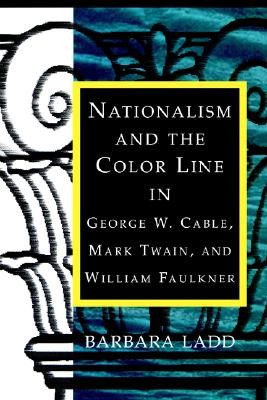| Nationalism and the Color Line in George W. Cable, Mark Twain, and William Faulkner Contributor(s): Ladd, Barbara (Author) |
|
 |
ISBN: 0807130494 ISBN-13: 9780807130490 Publisher: LSU Press OUR PRICE: $19.90 Product Type: Paperback - Other Formats Published: January 1997 Annotation: Nationalism and the Color Line in George W. Cable, Mark Twain, and William Faulkner is a strikingly original study of works by three postbellum novelists with strong ties to the Deep South and Mississippi Valley. In it, Barbara Ladd argues that writers like Cable, Twain, and Faulkner cannot be read exclusively within the context of a nationalistically defined "American" literature, but must also be understood in light of the cultural legacy that French and Spanish colonialism bestowed on the Deep South and the Mississippi River Valley, specifically with respect to the very different ways these colonialist cultures conceptualized race, color, and nationality. |
| Additional Information |
| BISAC Categories: - Literary Criticism | Native American - Social Science | Sociology - General |
| Dewey: 810.997 |
| Series: Southern Literary Studies |
| Physical Information: 0.56" H x 6.32" W x 9.02" (0.76 lbs) 224 pages |
| Themes: - Cultural Region - South - Ethnic Orientation - Native American |
| Descriptions, Reviews, Etc. |
| Publisher Description: Nationalism and the Color Line in George W. Cable, Mark Twain, and William Faulkner is a strikingly original study of works by three postbellum novelists with strong ties to the Deep South and Mississippi Valley. In it, Barbara Ladd argues that writers like Cable, Twain, and Faulkner cannot be read exclusively within the context of a nationalistically defined American literature, but must also be understood in light of the cultural legacy that French and Spanish colonialism bestowed on the Deep South and the Mississippi River Valley, specifically with respect to the very different ways these colonialist cultures conceptualized race, color, and nationality.Ladd probes the work of these writers for discontinuities, for moments of narrative incoherence, from which she charts the ideological winds that blew through the United States in the nineteenth and early twentieth centuries. In Cable's The Grandissimes, written at the beginning of the Redemption era, the discontinuities are strategic whispers to the reader about the reality of racial division and violence that lay beneath the white reconciliation romance. Twain's Pudd'nhead Wilson and Those Extraordinary Twins also inscribes racial discord, although with the added dimension of experimentation with form. And in Absalom, Absalom and Light in August, narrative incoherence becomes central as Faulkner explores the impact of radical racism on the ways that whiteness was constructed in the early twentieth century. Neither race nor nation, Ladd shows, is stable in the work of these writers, but is always contested and shifting.Ladd's book raises provocative questions about the relationships between race, region, and nationalism in literary study. With its innovative approach and rich New Historicist method, it is an important contribution to scholarship in several fields. |